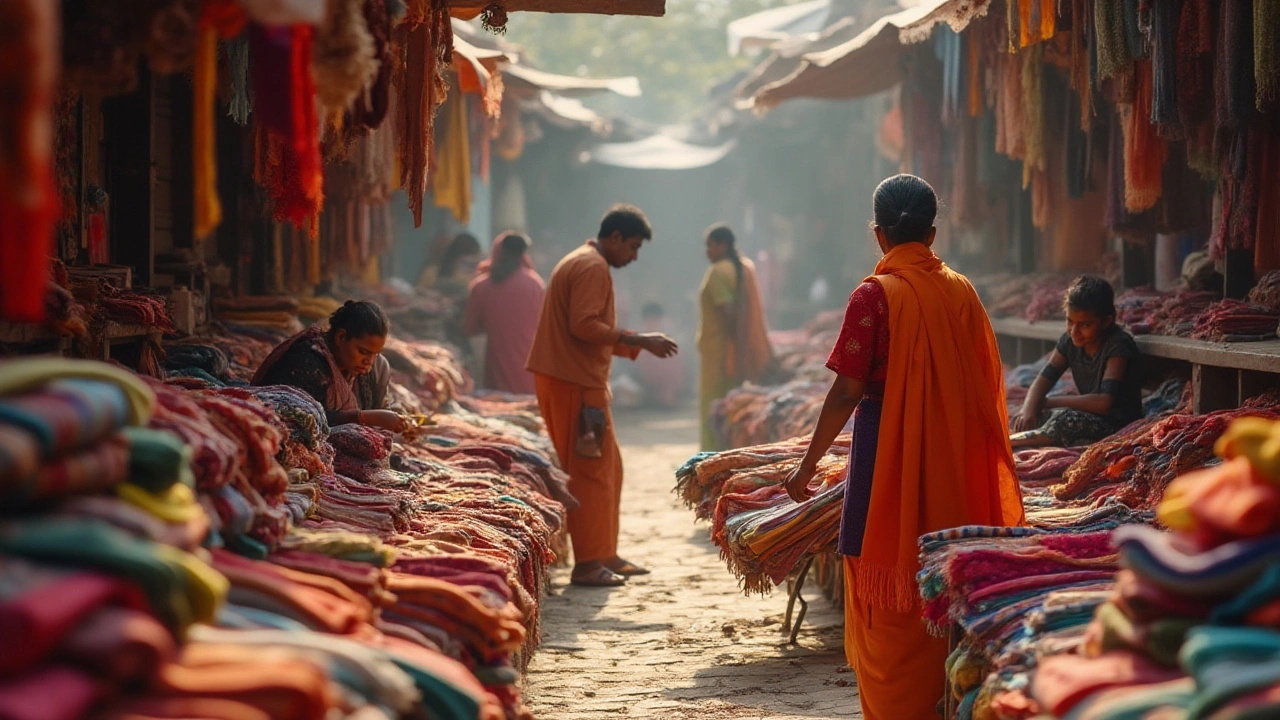Queen of Textiles: Why Surat Leads India's Fabric World
If you’ve ever wondered where most of India’s fabrics are made, the answer is simple – Surat. Locals call it the “queen of textiles” and for good reason. The city combines massive production capacity, a skilled workforce, and a supply chain that moves from yarn to finished garment in days, not weeks.
Why Surat Earns the Crown
First, Surat’s cotton base is huge. Mill owners have been turning raw cotton into yarn for over a century, so they know every trick in the book. Today the city houses more than 1,000 textile units, ranging from tiny family workshops to high‑tech mills that spin, weave, and finish fabrics under one roof.
Second, the logistics network is unbeatable. The city sits on the Tapi River, has a nearby port, and is connected to major highways. That means raw material imports and finished‑goods exports happen quickly and at low cost. For a buyer, this translates to shorter lead times and better price control.
Third, the talent pool is a hidden gem. Generations of families have learned the craft, so you’ll find workers who can handle everything from delicate silk weaving to heavy‑duty denim production. Training institutes in the area keep skills fresh, ensuring the industry stays competitive.
What This Means for Your Business
Whether you’re a fashion brand, a home‑textiles retailer, or a new startup looking for a manufacturing partner, Surat offers a few practical advantages. You can source multiple product types from a single location, reducing the hassle of juggling several suppliers. The city’s competitive pricing also helps keep margins healthy, especially when you order in bulk.
To get the most out of Surat’s textile ecosystem, start by visiting the local trade fairs. Events like the Surat Textile Expo let you meet mill owners, see sample fabrics, and negotiate face‑to‑face. Bring a clear list of your requirements – yarn count, color fastness, finish – and ask for samples before committing to large orders.
Another tip is to work with a local sourcing agent. They know the best mills for specific fabrics, can navigate paperwork, and often secure better payment terms. This saves time and reduces the risk of miscommunication, especially if you’re ordering from abroad.
Finally, keep an eye on sustainability trends. Many Surat mills are now adopting water‑saving dyeing processes and using recycled polyester. Partnering with environmentally conscious manufacturers can boost your brand’s image and meet growing consumer demand for green textiles.
In short, the queen of textiles isn’t just a nickname – it’s a promise of scale, speed, and skill. By tapping into Surat’s strengths, you can streamline production, lower costs, and stay ahead of fashion cycles. So the next time you need fabric, think of Surat and treat it like the royal partner it truly is.

Exploring India's Queen of Textiles: A Deep Dive into Textile Manufacturing
India has long been recognized as a hub for textile manufacturing, a crown attributed to the skill and craftsmanship woven into every piece of fabric. Often hailed as the 'Queen of Textiles', this country's rich history and strategic innovations have solidified its status globally. Discover the pivotal role played by textile manufacturing in India's economy, the influential figures in this industry, and the unique textiles produced here. Gain insights into why India remains a powerhouse shaping the global textile landscape.
Read More